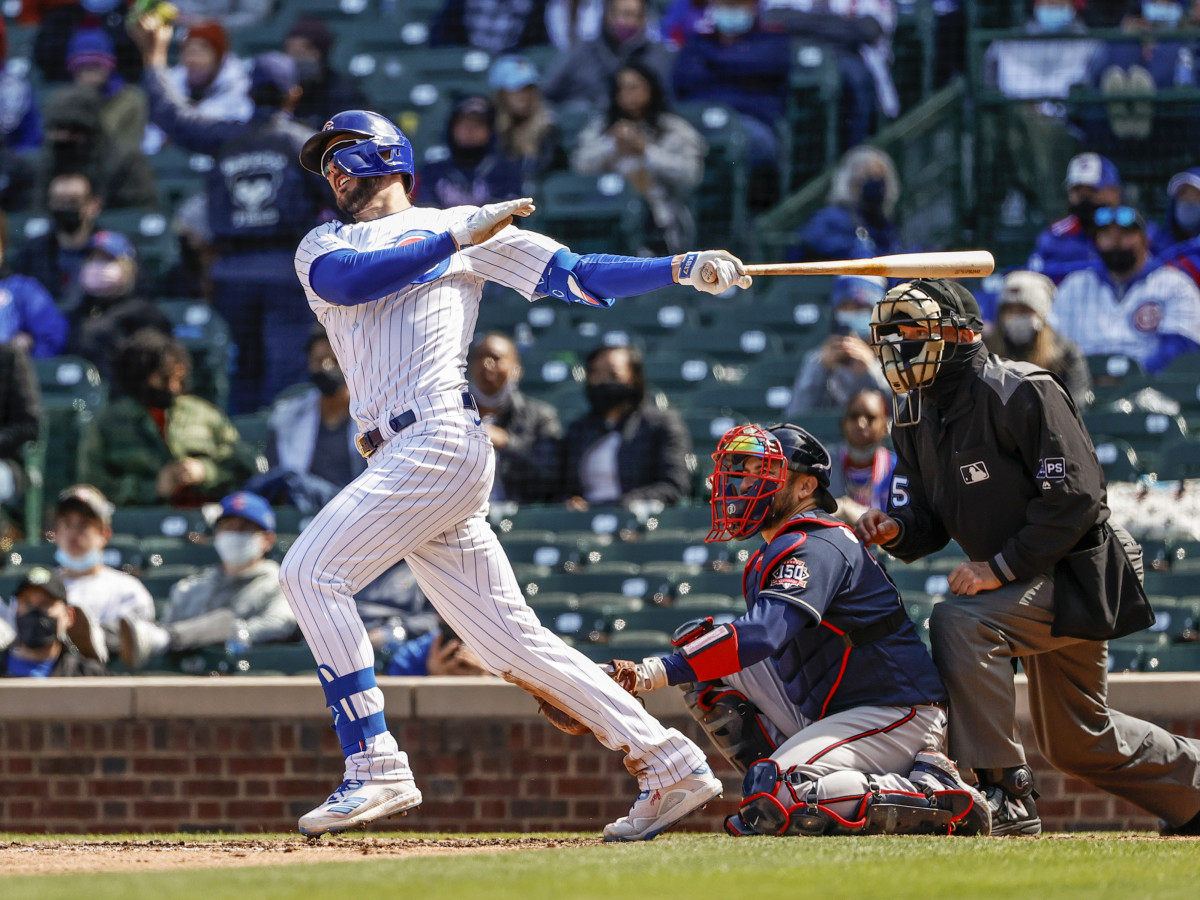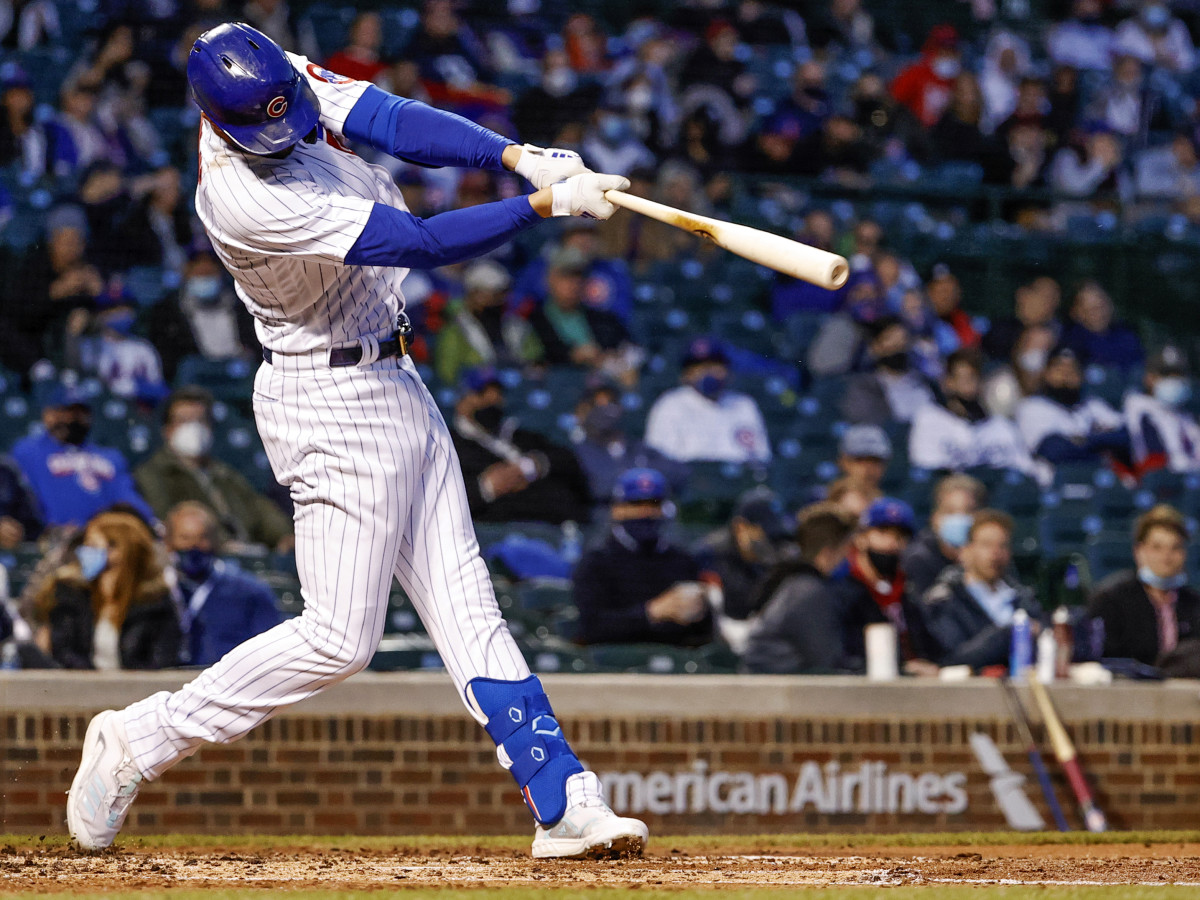How Kris Bryant Changed His Innovative Swing and Returned to MVP Form

Welcome to The Opener, where every weekday morning you’ll get a fresh, topical column to start your day from one of SI.com’s MLB writers.
Kris Bryant helped change baseball. Baseball fought back. Until he broke. Now it is Bryant’s turn to answer.
The seven-year arc of the career of the Chicago Cubs infielder/outfielder is the story writ small of how the game evolves, and how those who want to remain in it must adjust to those winds of change.
Bryant is absolutely crushing it this season (.323/.405/.708). It is a stunning turnaround for a player who over the previous three seasons stopped hitting the ball hard and saw his trade value plummet.
To explain why Bryant is back, start with his health. Over those three seasons Bryant dealt with shoulder, wrist and hand injuries. He often played through those injuries. Now he is healthy.

But there is much more. It involves hours in the cage this past winter with his father, Mike, to remake one of the most iconic swings in baseball. To understand what Bryant did, watch him in the on-deck circle as he prepares for an at-bat this season. Bryant changed his on-deck routine to groove a swing designed to get on top of the baseball, not what was his innovative Launch Angle swing in which he once told me his goal was to hit the bottom third of the baseball. Bryant changed his on-deck swing to resemble those of hitters such as Dustin Pedroia, Ryan Braun, Derek Jeter and Travis d’Arnaud: appearing to swing down at the baseball.
“It took a lot of hard work,” Mike Bryant says. “Two hundred hacks a day at the high fastball. It was 150 to 200 hacks off tee or off the machine on that pitch before we moved to other parts in the zone.”
Few players in baseball history enjoyed the early success that Bryant did. College player of the year in 2013. Second overall draft pick in 2013. Rookie of the Year and All-Star in 2015. MVP and World Series champion in 2016. A seventh place MVP finish in 2017.
Bryant helped change the game with a swing designed to get the ball in the air, a swing crafted as a boy in his backyard batting cage with Mike, a former minor league player and hitting coach who still gives lessons and who, like his muse, Ted Williams, was ahead of his time. In 2015, the first year of Statcast, no player hit with a higher launch angle than did Bryant (19.6 degrees; minimum of 2,500 pitches). The Cubs drafted him in part because they saw Bryant hit baseballs with extraordinary backspin. His flyballs carried and carried, until what looked like routine outs became home runs. He did strike out a league-high 199 times as a rookie, but all those whiffs were merely the accepted tariff for launching backspinning flyballs that sailed into the yonder.
Many other hitters jumped on the Launch Angle bandwagon. Groundballs became the enemy. Slugging percentage, not batting average, mattered. “Slug is in the air” became the overriding principle of hitting. Higher and higher they aimed. The MLB average launch angle increased every year for four consecutive years.
Pitchers fought back. Such is the push and pull of baseball history. Every innovation inspires an antidote. In this case, the high fastball became the Kryptonite for Bryant and the Launch Angle generation. Take a look at how much the game changed since Bryant owned baseball as a rookie:
MLB Four-Seam Fastballs
2015 | 2021 | |
|---|---|---|
Average Height of Pitch | 2.57 | 2.74 |
Pct. in Upper Third of Zone & Above | 43% | 52% |
Batting Average Against | .269 | .249 |
Average Velocity | 93.2 | 93.6 |
The average fastball essentially rose from a belt-high pitch to one in the upper third of the zone—above the hands.
Few players suffered from fastballs being thrown higher and harder than did Bryant. His beautiful Launch Angle swing, combined with his injuries, turned his storybook career into a nightmare.
“Pitchers were beating him with a lot of fastballs, plain and simple,” Mike says. “A hitter has to have the confidence that comes from feeling where his hands are in the swing. I don’t think he had that feel of how his hands were getting to the baseball.”
Mike and Kris made several changes to his swing. Before the high fastball changed the game, Kris would bring his hands to the ball from the height of the middle of the strike zone. But high fastballs defeated that approach because to hit a high fastball Bryant would have to swing up at the ball. Hands move slower going up than down; it’s a matter of simple gravity, like riding a bike uphill or downhill. With increased velocity in the game, Bryant could not get to that pitch above his hands.
One of Bryant’s offseason adjustments was to bring his hands to the ball from the top of the zone. The feeling he created is one of “swinging down,” though that is more of a swing thought than a literal path. The adjustment made his swing quicker and more direct to high fastballs. It gave him the added benefit of “defining” the top line of the strike zone. Anything above his hands was a ball. Bryant took those 200 hacks a day on high pitches to create muscle memory—to regain that confidence a hitter gets from knowing where and how his hands are working.

A second change he made involved timing and rhythm. Bryant had hit with relatively quiet hands. As his front foot landed, his hands remained in the loaded position behind him, still. To better gain ground on fastballs, Bryant changed to start his hands just before the front foot lands. His hands and the rotation of his hips have an early rhythm that wasn’t there before.
Another change: Bryant went to a more upright stance. Formerly in a deep crouch with his feet wide apart, Bryant changed to stand taller in the batter’s box with a narrowed stance. By standing taller, Bryant holds his hands higher, which again creates a better angle to the high fastball. Everything was designed to create a better swing path to velocity.
Hitting in the family cage in January is one thing. Hitting elite major league pitching in competition is quite another. Results matter. They define MLB, not the process. Wins and losses. Hits and outs. Your place in the game is defined coldly, clinically. The re-made Bryant needed validation. On April 12, Milwaukee righthander Freddy Peralta threw an 0-1, 94-mph fastball at the top of the strike zone. Bryant smashed it 401 feet to left-center for a home run.
“That was a yow-za moment!” Mike says.
It was the first time since Sept. 10, 2019 that Bryant homered off a four-seam fastball that was three feet off the ground—the top of the strike zone.
Five days later, he did it again. He hammered a high fastball from Jesse Biddle of Atlanta for a home run. One inning later, he did it again, this time smashing a high heater from Jacob Webb. After hitting just one homer off a high fastball in the 2019 and 2020 seasons combined, Bryant hit three in five days.
The transformation has been enormous. In 26 games this year, Bryant already has exceeded his hits and home runs off four-seamers from the entirety of last season.
Bryant vs. Four-Seam Fastballs
Year | Avg. | SLG | H | HR |
|---|---|---|---|---|
2020 | .227 | .318 | 10 | 1 |
2021 | .361 | .889 | 13 | 6 |
Overall, Bryant is hitting the ball harder than he has since his MVP season five years ago (average exit velocity: 88.3 mph). And after hitting his first six seasons with an average Launch Angle between 17.0 and 21.8 degrees, Bryant this season has lowered it to 13.4.
Entering Monday, Bryant is the best slugger in the National League against four-seam fastballs (minimum 400 pitches). Last year he ranked 135th out of 151 NL hitters.
Bryant is eligible for free agency after this season. The Cubs are in an awkward spot, a veteran team with a poor, strikeout-prone offense (fourth highest strikeout rate in MLB) and a pitching staff that has the fourth lowest average four-seam velocity and the worst walk rate in baseball. Their ceiling is limited, even if you think the NL Central is a forgiving division. It is entirely possible that Chicago, even on the fringes of a wild card race, puts Bryant on the trade market in July.
The good news for the Cubs is that due to health and hard work, Bryant is re-establishing his value. Once again, he is a game-changing middle-of-the-order hitter who can play third base, first base and left and rightfield. It is an old story wrapped in modern metrics. Baseball constantly evolves, and so do the great ones who play it.
More MLB:
• Five Takeaways From Baseball's First Month
• MLB Must Amend Three-Batter Rule After Scary Situation
• Byron Buxton's Breakout Season Is Finally in Full Swing
• How Worried Should MLB Be About Offensive Struggles?
